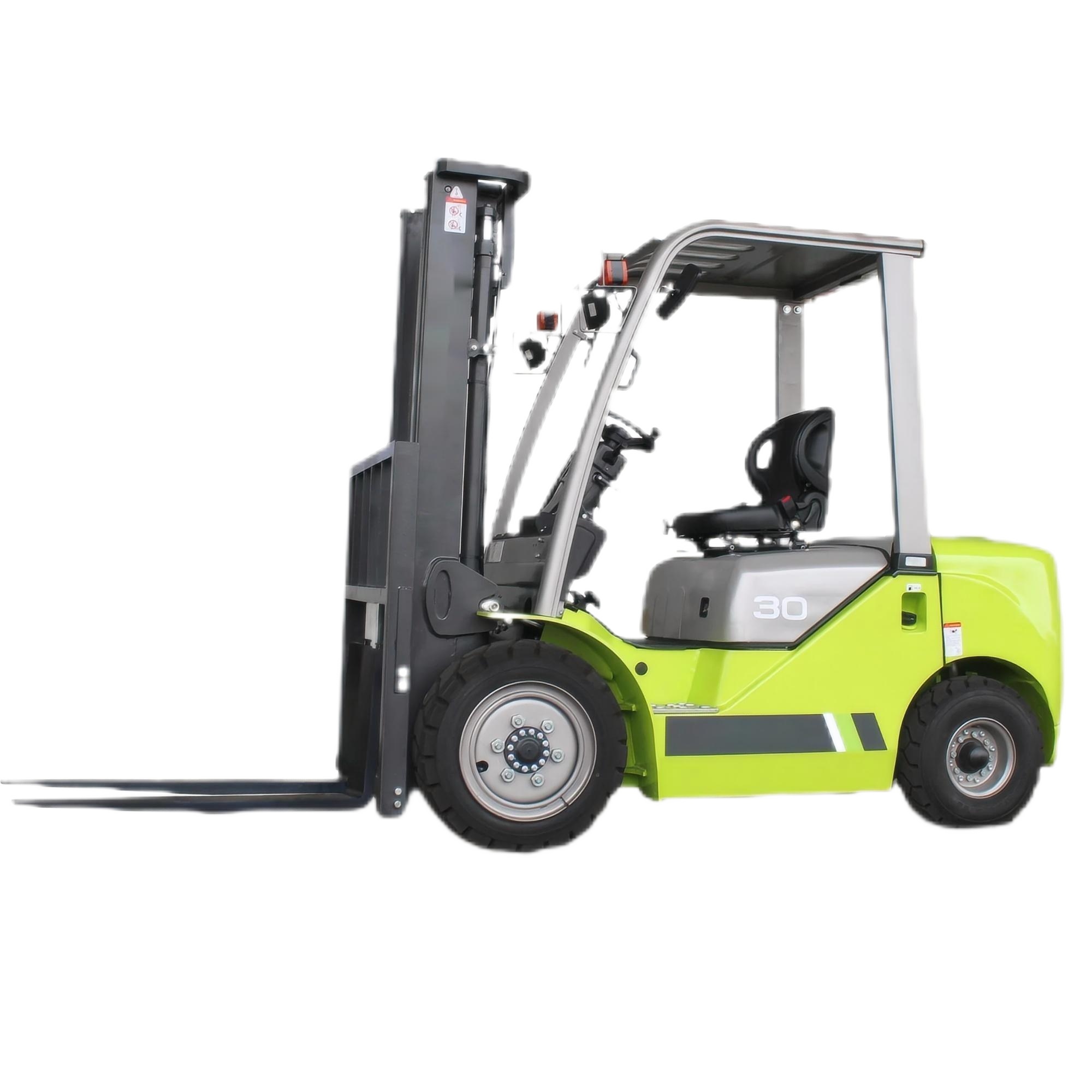The Value of Electric Forklifts: Multi-dimensional Benefits for a Sustainable Future
Electric forklifts are not just material handling tools, but also strategic assets for enterprises to achieve cost reduction, efficiency improvement, green transformation, and intelligent upgrade. The comprehensive benefits they create in economic, environmental, and social value dimensions are reshaping the competitiveness landscape of modern logistics and manufacturing.

I. Economic Value: A Revolution in Whole Lifecycle Cost
- Direct Cost Optimization
Cost Item Electric Forklift In-Cycle Forklift Saving Ratio
Energy Cost (5 Years) ¥38,000-52,000 ¥180,000-310,000 75-83%
Maintenance Cost (5 Years) ¥30,000-45,000 ¥75,000-90,000 50-60%
Labor Efficiency Improvement 1 forklift replaces 6-8 loaders Requires manual operation Labor cost reduced by 80%
Data source: China Federation of Logistics and Purchasing 2023 Industry Report
Case: After an home appliance enterprise introduced 20 3-ton electric forklifts:
Annual diesel cost savings of 1.27 million yuan, maintenance cost reduced by 58%
Cargo turnover efficiency increased by 40%, warehouse area utilization increased by 25%
- Implicit Cost Reduction
Accident Loss Reduction: Intelligent protection system reduces work-related injury accident rate by 90%, reducing compensation and downtime losses;
Inventory loss reduction: ±2mm positioning accuracy reduces cargo collision damage rate by 65%;
Equipment Residual Value Appreciation: After 5 years, the residual value rate is 35% (in-cycle forklifts only 15%), reducing asset depreciation pressure.
II. Environmental Value: The Core Engine of Zero-carbon Transformation
Direct Emission Reduction Benefits
Single Unit Annual Emission Reduction:
Emission Type Electric Forklift 3-ton Diesel Forklift Emission Reduction
CO₂ 0 8.2 tons 8.2 tons/year
NOx 0 1.5kg 1.5kg/year
Particulate Matter 0 0.8kg 0.8kg/year
Note: Calculated based on 2,000 hours of operation per year
Scale Effect: If 5 million in-cycle forklifts worldwide are replaced with electric models, the annual carbon reduction will reach 4.1 million tons (equivalent to the annual carbon sequestration of 2,000 square kilometers of forest).Circular Economy Contribution
Battery Cascade Utilization: Retired lithium batteries are used for energy storage stations, with a residual value utilization rate of 70%;
Material Recycling Rate: More than 90% of the components of the whole machine can be recycled, and the recycling rate of lead-acid batteries exceeds 98%.
III. Social Value: Workplace and Industrial Upgrade
- Working Environment Improvement
Occupational Health Protection:
Noise reduced from 85dB to below 72dB, hearing damage risk reduced by 90%;
Zero tailpipe emissions eliminate the risk of CO poisoning, and warehouse air quality compliance rate increased to 100%.
Reduced Labor Intensity: Electric steering system reduces operating force by 75%, and the proportion of female drivers increased to 35% (traditional forklifts only 12%).
- Technology Spillover Effect
Intelligent Manufacturing Foundation: 5G+IoT forklifts provide real-time data for digital twin warehouses, pushing inventory accuracy up to 99.5%;
Emerging Industrial Chain: Drives the development of lithium batteries, permanent magnet motors and other industries, and is expected to break through 80 billion yuan in electric forklift supporting industry scale by 2025.
IV. Strategic Value: Reconstruction of Enterprise Competitiveness
- Compliance and Brand Premium
International Standard Certification: Meets CE, UL, RoHS and other regulations, breaking through green trade barriers in European and American markets;
ESG Rating Improvement: The probability of MSCI ESG rating upgrade for enterprises using electric forklifts increased by 47%, and financing costs decreased by 1-2 percentage points.
- Supply Chain Resilience Enhancement
Energy Independence: Photovoltaic + energy storage + electric forklift mode reduces the impact of oil price fluctuations on logistics costs;
Agile Response Capability: Quickly switch tools (within 30 seconds) to support multi-variety mixed-line production, and shorten order delivery cycle by 30%.
V. Future Value: Continuous Empowerment of Technological Iteration
Technical Direction Potential Value Business Impact
Solid State Battery Range extended to 16 hours, charging time shortened to 15 minutes 24-hour continuous operation, equipment utilization >95%
AI Visual Navigation Fully automatic path planning, manual intervention reduced by 80% Labor cost reduced by another 40%
Hydrogen Hybrid Power Zero carbon emissions + fast replenishment, suitable for field operations Open up new markets such as mines and agriculture
Digital Twin Maintenance Fault prediction accuracy >90% Maintenance cost reduced by another 35%
Conclusion: From Cost Center to Value Creator
Electric forklifts are redefining enterprise operating logic through the "economic-environmental-social" triple value matrix:
Short term: Recoup investment costs within 1-2 years and directly increase profit margins;
Medium term: Build a green supply chain in 3-5 years and enhance market competitiveness;
Long term: Lay the foundation for smart logistics in 5-10 years and seize the opportunity of industrial upgrading.
Driven by carbon neutrality and Industry 4.0, electric forklifts have evolved from auxiliary equipment to the core infrastructure of enterprise sustainable development. Choosing an electric forklift means choosing a more efficient, greener, and smarter future.





